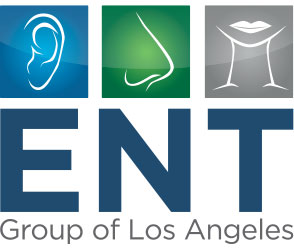Hearing & Balance
The physicians and staff of the ENT Group of Los Angeles have put together the following resources in order to better assist you.
Cholesteatoma
A cholesteatoma is a benign cyst in the middle ear or on the mastoid. A rare cause of hearing loss, a cholesteatoma results from a malfunction of the Eustachian tubes, usually as a result of ear infections, perhaps even a perforation of the tympanic membrane, commonly known as the eardrum.
Causes Of A Cholesteatoma
There are two primary reasons for a cholesteatoma. It may appear as a congenital defect, a relatively rare occurrence, or it may form and fill because of an ear infection. When a patient has an ear infection and the Eustachian tubes are not working properly, negative pressure retracts the eardrum into the middle ear. This creates a pocket, or cyst, that may fill with old skin cells and other debris, forming a cholesteatoma. If the cyst becomes infected, it may continue to enlarge, eventually damaging the small bones and nerves of the middle, or even the inner, ear.
Symptoms Of A Cholesteatoma
A cholesteatoma, particularly if it enlarges, may result in a sense of disequilibrium in the patient. Symptoms of a cholesteatoma may include:
- Dizziness
- Balance difficulties
- Drainage from the ear
- Loss of hearing in the affected ear
- Loss of control of facial muscles, in extreme cases
Diagnosis Of A Cholesteatoma
Diagnostic tests help to determine whether a cholesteatoma exists and to pinpoint its size and location. These tests also help to confirm that the patient’s symptoms are caused by a cholesteatoma rather than some other medical problem. Diagnostic tests for a cholesteatoma include:
- Physical Examination with an Otoscope
- MRI scan
- CT scan
- Electronystagmography
Treatment Of A Cholesteatoma
The infection of a cholesteatoma can be treated with antibiotics and ear drops, but in order to remove the cyst itself surgery must be performed.
This surgery may be performed through the ear canal or by making an incision behind the ear. Sometimes, a combination of these two methods is employed.
Depending on individual circumstances, a tympanoplasty to repair the eardrum, or a mastoidectomy, to remove the mastoid bone, will also be performed.
Risks Of A Cholesteatoma
While the surgical procedures used to remove cholesteatomas are generally considered safe, any surgical procedure involve some risks. Post-surgical complications may include:
- Loss of hearing
- Dizziness
- Tinnitus
- Facial paralysis
- Mouth dryness or taste disturbance
While extremely rare, life-threatening complications, such as mastoiditis or meningitis, are also possible. Since it is possible for a cholesteatoma to regrow, it is important for patients who have experienced this problem to have ongoing medical examinations by an otolaryngologist.
For more information on any of our services please call (844) 4-ENTDOC (844) 436-8362.
